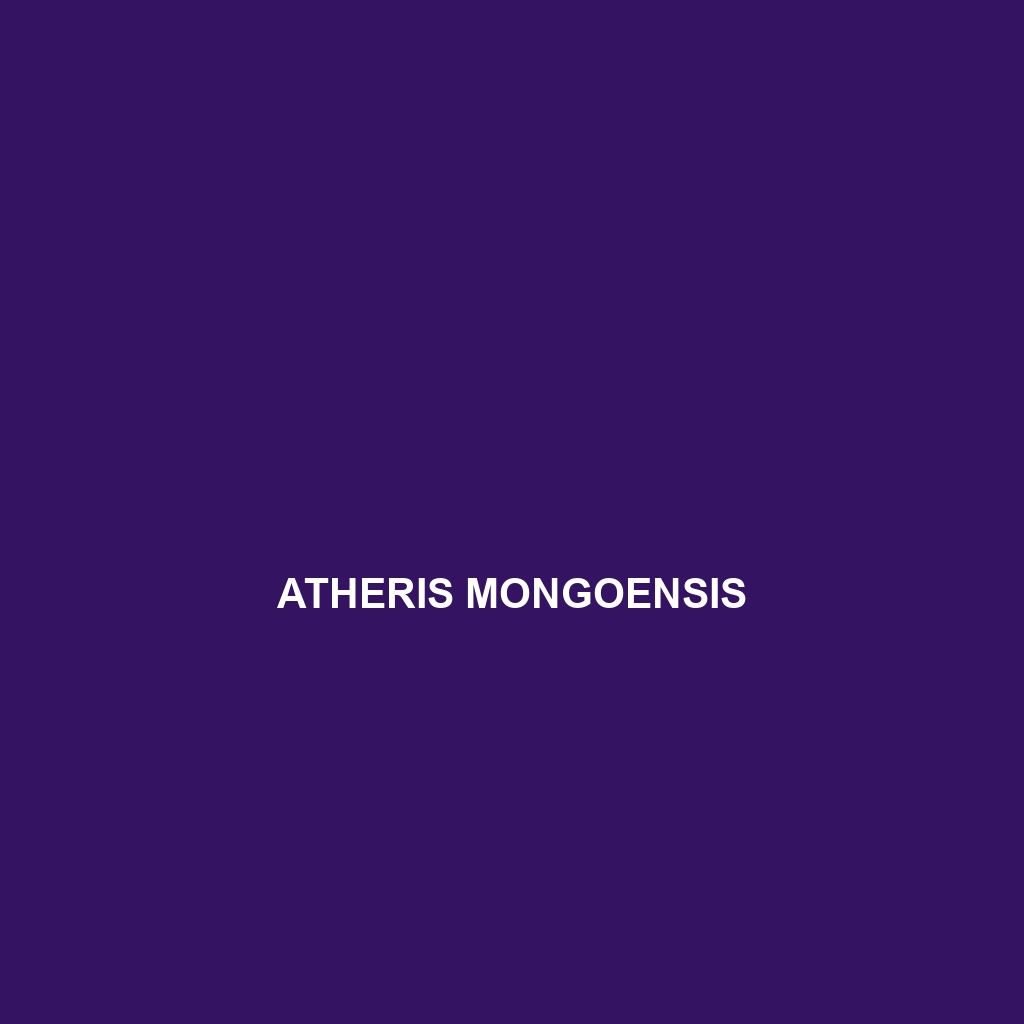Atheris mongoensis: The Unique Mongoese Bush Viper
Common Name: Atheris mongoensis
Scientific Name: Atheris mongoensis
Habitat
Atheris mongoensis, commonly known as the mongoese bush viper, is primarily found in the dense, humid forests and bushlands of central and eastern Africa. This species prefers areas with plenty of vegetation, including thorny bushes and trees, where it can effectively camouflage itself. Key geographic locations include regions in countries like Tanzania, Malawi, and Mozambique, where these snakes thrive in their natural habitats.
Physical Characteristics
The mongoese bush viper exhibits an average length of 60 to 80 centimeters (approximately 24 to 31 inches). Its coloration is striking, often showcasing vibrant hues of green and yellow, which help it blend into the foliage. Distinctive features include a flat, triangular head, and keeled scales that give it a textured appearance. Its body shape is robust, allowing the snake to navigate through its arboreal surroundings with ease.
Behavior
Atheris mongoensis is arboreal in nature, spending most of its time in trees where it exhibits a primarily nocturnal lifestyle. It is known for its ambush hunting technique, often remaining motionless to surprise unsuspecting prey. The species is also characterized by its defensive behavior; when threatened, it may inflate its body and hiss to ward off potential predators. These behaviors make it a fascinating subject for reptile enthusiasts and researchers alike.
Diet
The diet of the mongoese bush viper consists mainly of small mammals, birds, and amphibians. It uses its heat-sensing pits to detect warm-blooded prey in low light conditions. Atheris mongoensis employs a venomous bite to subdue its prey, which it then consumes whole. Understanding its feeding habits is essential for those interested in the ecological balance of its native habitats.
Reproduction
The reproduction of Atheris mongoensis typically occurs in the rainy season, from October to April. Females give birth to live young, with litter sizes ranging from 5 to 20 snakes. Newborns measure about 20 to 25 centimeters (8 to 10 inches) in length, and they are independent from birth, relying on their natural instincts to find food and avoid predators.
Conservation Status
Currently, Atheris mongoensis is listed as vulnerable due to habitat loss and degradation caused by agricultural expansion and deforestation. Conservation efforts are essential to protect this species and its natural habitat, emphasizing the importance of maintaining biodiversity within its ecosystem.
Interesting Facts
One fascinating aspect of Atheris mongoensis is its ability to adapt its coloration based on environmental changes, providing excellent camouflage against predators and prey alike. Additionally, it is one of the few venomous snake species that give live birth, setting it apart from many other snakes in the family Viperidae.
Role in Ecosystem
Atheris mongoensis plays a crucial role in its ecosystem by regulating populations of small mammals and birds, thus contributing to the ecological balance. As both predator and prey, this snake enhances biodiversity and serves as an indicator of environmental health, influencing various trophic levels in the food web.
This HTML structure provides a comprehensive and SEO-optimized description of Atheris mongoensis, enhancing its online visibility while offering informative content to readers.
